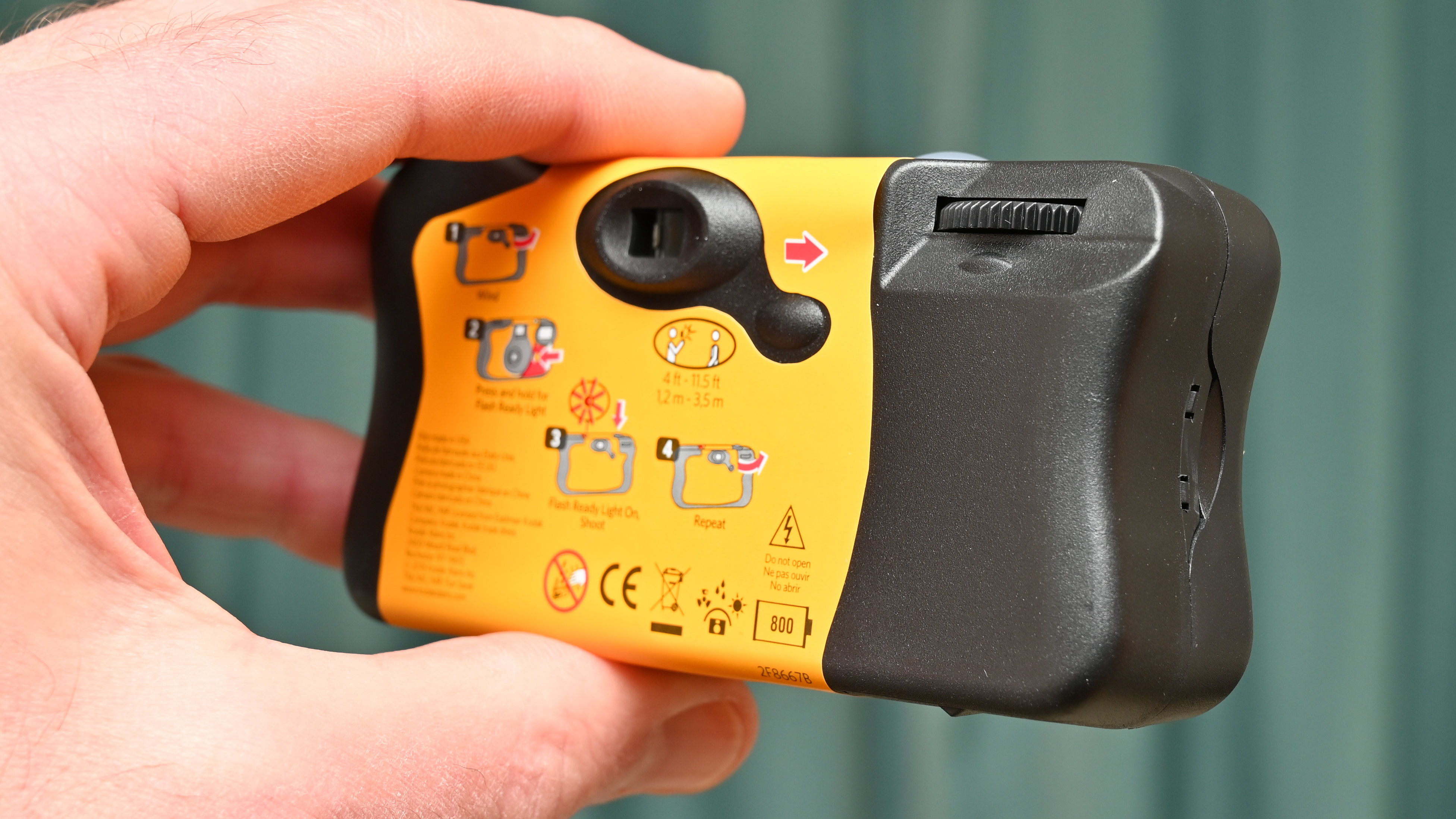
Disposable film cameras have found a market for parties, wedding receptions and other events, where they’re left on tables and guests are invited to pick them up take their own snaps. The Kodak Funsaver is typical of the breed, coming pre-loaded with a roll of Kodak MAX ISO 800 film and being utterly straightforward to use. And to make things even easier, full instructions are printed on the back of the camera.

Specifications
Price & Availability
The Kodak Funsaver has a total lifespan of 27 exposures. That’s because it comes pre-loaded with a 27-shot roll of color film and can’t be reloaded. The Kodak MAX ISO 800 film itself is of quality and the camera feels pretty solid, making it decent value for around $16/£17. As usual though, that doesn’t include mailing the camera somewhere or taking it to a lab to have the film removed and processed, along with a choice of scans or physical postcard prints. That can cost as much or more than the camera itself, and is the usual sting in the tail of analog photography these days.

Design & Handling
The plastic build of this camera feels pretty tough and, as with all things plastic, its material will vastly exceed the lifespan of its usefulness, which is limited to one roll of film. At least the retail packaging can be recycled. The camera itself is made in China, the pre-loaded roll of Kodak MAX ISO 800 27-exposure film being made in the USA. Although it has a curvier design, most of the internals are the same as in the Kodak Black & White Tri-X 400 Single Use Camera, which naturally delivers monochrome rather than color negatives.

As such, the front of the camera features a built-in flash and a button for activating it. A battery is pre-loaded along with the film. Again, the optic lens is a single-element unit with a 30mm focal length and fixed aperture of f/10. Like the aperture, the focus distance is also fixed, giving a depth of field from 1m to infinity, and the shutter speed is fixed at 1/00th of a second.
Around the back, the sticker that covers most of the camera is printed with instructions on how to use the camera, which boil down to frame advance and pressing the shutter button, and use of the flash. Flash coverage is stated as having a range of 1.2-3.5m, or 4-11.5ft. A warning is shown not to open the camera due to the high voltage of the flash unit. As usual with disposable cameras, the idea is that you send off the whole camera to a lab for film processing, rather than just the film itself.

The film winder sits at the top right of the rear panel in the time-honored position. Up on top there’s the shutter button which operates smoothly, a frame counter that counts down from 27 to zero, and a flash ready indicator lamp. Suffice it to say that everything is intuitive and easily accessible.

Photo Performance
I tested the camera in various lighting conditions, from full-on direct sunlight to shade outdoors, as well as indoors with and without flash. The combination of camera and pre-loaded Kodak MAX ISO 800 film gives just enough headroom to cover bright sunny scenes, while still managing to cope with shady shots, despite the camera having a fixed exposure setting of 1/100th of a second at f/10.
Flash is all but essential when shooting indoors, although the camera fared better than some competitors with an indoor scene under bright lighting. Sharpness is about what I’d expect from a cheap, single-element lens. I’d describe it as adequate for snapshots at best.
Sample Images
This gallery of sample shots was taken in varying lighting conditions from bright direct sunlight to deep shade, as well as indoors with and without flash.








Verdict
True to its name, the Kodak Funsaver is a bit of fun that enables you to save moments in time, in point and shoot style. Being pre-loaded with film and battery, it’s ready to use as soon as you take it out of the packaging. The basic controls are quick and easy to use but ultimately, picture quality falls way short of what I’d expect from even a basic mobile phone nowadays.

Should you buy the Kodak Funsaver Single Use Camera?
✅ Buy this...
- Cheap to buy
- Hassle-free use
- Decent color film
🚫 Don't buy this...
- Not reloadable
- Lackluster image quality
- Pricey film processing







